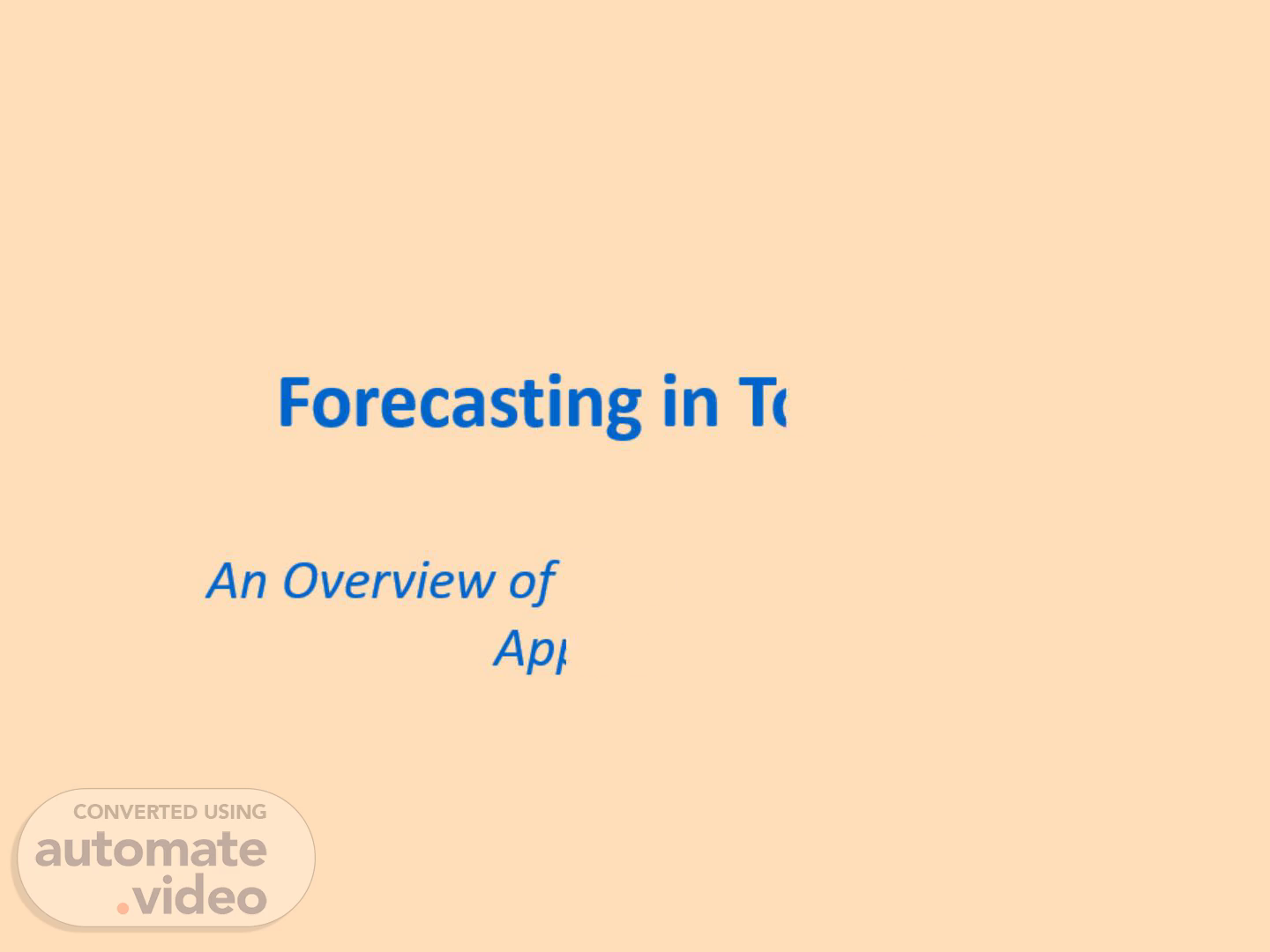
Page 1 (0s)
Forecasting in Tourism. An Overview of Trends, Methods, and Applications.
Page 2 (7s)
Introduction to Tourism Forecasting. Tourism forecasting involves predicting future trends and visitor patterns to better manage resources and plan for economic impacts. Accurate forecasting is crucial for maximizing profitability and ensuring sustainable tourism development..
Page 3 (20s)
Importance of Forecasting in Tourism. Effective forecasting helps tourism businesses and destinations anticipate demand, adjust marketing strategies, manage seasonal fluctuations, and make informed decisions about infrastructure development..
Page 4 (32s)
Methods of Tourism Forecasting. 1. Time Series Analysis: Uses historical data to identify trends and patterns.\n2. Regression Analysis: Examines relationships between tourism and influencing factors.\n3. Delphi Method: Gathers expert opinions to predict future trends.\n4. Simulation Models: Uses computer simulations to predict outcomes based on various scenarios..
Page 5 (50s)
Case Study: European Tourism Forecasting. European countries use a combination of methods to forecast tourism demand, including time series analysis and regression models. This helps them manage seasonal peaks and optimize resource allocation across popular destinations..
Page 6 (1m 3s)
Technology in Tourism Forecasting. Advancements in technology, such as AI and big data analytics, are revolutionizing tourism forecasting. These tools provide more accurate predictions by analyzing vast amounts of data from social media, booking systems, and travel trends..
Page 7 (1m 17s)
Challenges in Tourism Forecasting. Forecasting tourism demand can be challenging due to factors such as economic fluctuations, political instability, and unforeseen global events like pandemics. Accurate forecasting requires continuous data updates and adjustments..
Page 8 (1m 30s)
Best Practices for Accurate Forecasting. 1. Regularly update data and models.\n2. Use multiple forecasting methods.\n3. Collaborate with industry experts.\n4. Incorporate both quantitative and qualitative data.\n5. Monitor and adjust forecasts based on real-time information..
Page 9 (1m 45s)
Future Trends in Tourism Forecasting. The future of tourism forecasting will likely see increased use of AI and machine learning, enhanced data integration, and more focus on sustainability. Predictive analytics will become more sophisticated, offering deeper insights into traveler behavior and preferences..
Page 10 (2m 0s)
Conclusion and Q&A. In summary, forecasting in tourism is vital for effective planning and management. By utilizing advanced methods and technologies, stakeholders can better anticipate trends and make informed decisions. Thank you for your attention. Any questions?.